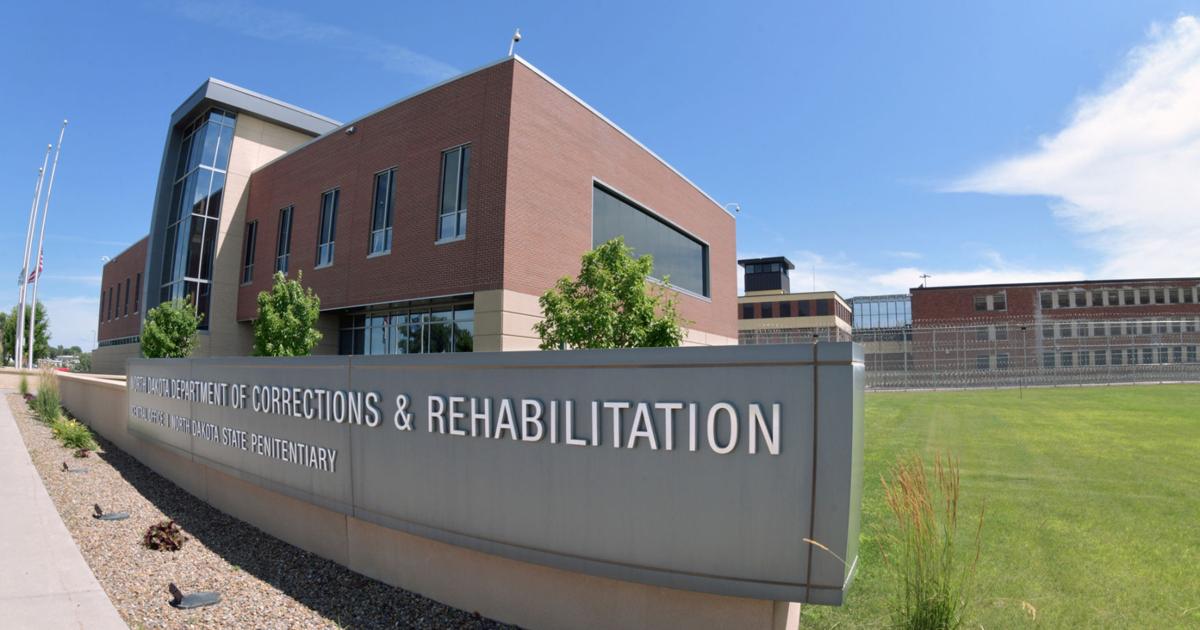
North Dakota is releasing fewer prisoners on parole than it did before the coronavirus pandemic, but leaders are saying they believe they could get back to pre-COVID-19 numbers.
The North Dakota Parole Board granted 822 paroles in 2022, according to data obtained through an open records request made by the Prison Policy Initiative. With 1,059 hearings, the board’s parole grant rate was at 78%, meaning North Dakota tied Wyoming for having the highest parole rate in the U.S. that year.
The number of North Dakota prisoners released dropped 23% from 2019, which had 1,100 parolees, according to data published last month. The approval rate also dropped 3% — 1,368 prisoners requested early release in 2019.
North Dakota isn’t alone in releasing fewer prisoners after the pandemic. All states that had data available granted fewer paroles last year than they did in 2019, according to Prison Policy’s data. Alabama’s parole approval rate dropped 67%, the most significant drop in the country.
People are also reading…
Alaska released 79% fewer people in 2022 than in 2019, the greatest decrease in the nation, and also had the largest drop in parole hearings with 75% fewer in 2022 than in 2019.
Only South Dakota released more people last year than in 2019, increasing its total releases by 8%, Prison Policy data showed.
Releasing a low number of inmates on parole defeats the purpose of discretionary parole, Prison Policy spokeswoman Wanda Bertram recently told The Forum. In some states, early release is something that is offered in name but isn’t reality, she said.
“When a state policy doesn’t match the reality, and an opportunity appears to be afforded to people that’s actually a closed door, that takes away people’s entire source of hope,” she said. “In my opinion, that’s an injustice.”
Minnesota was not included on the list since it doesn’t have a parole board and offers no early release for good behavior. A person must serve two-thirds of their sentence before being granted supervised release.
A number of factors have played a role in fewer releases, said Dave Krabbenhoft, director of the North Dakota Department of Corrections and Rehabilitation. The agency has had a hard time finding people to work, meaning fewer staff are available to offer educational programming, treatment for drug and alcohol addiction, and mental health services, he said.
Those programs can help parolees successfully complete probation once released from prison, which would reduce the possibility of recidivism.
With limited access to those programs, inmates may not be ready for release, said Steven Hall, director for the Corrections Department’s transitional planning services. Treatment facilities outside of prisons are full, as well, Hall noted.
That pushes back parole approvals, he said.
North Dakota has more prisoners in its facilities than ever before. Corrections data showed the state recorded 1,855 inmates as of Nov. 1. That’s up from 1,775 at that time in 2019 and 1,256 at the end of 2003.
Prison Policy, a criminal justice think tank in Massachusetts that frequently publishes data on incarceration, started looking at parole releases during the pandemic because political leaders were putting out the message that they were granting more paroles, Bertram said.
“In the midst of that, something that we noticed was that paroles were actually going down in most places,” she said.
On average, U.S. prisons reduced their populations by 5% from the end of 2019 to late April or early May 2020, according to data collected by Prison Policy.
When North Dakota reduced its inmate numbers by 19% during the same time period, Prison Policy praised the state for doing more than any other to reduce prison populations during the pandemic.
Inmate numbers dropped to near 20-year lows in mid-2020 after the Corrections Department announced it would issue early paroles because of the coronavirus pandemic, hitting 1,284 inmates in September 2020.
Crime increased about 3% from 2019 to 2022 in North Dakota. That has been combined with longer sentences, meaning more people are spending more time in prisons, Krabbenhoft said.
“It’s not one cause. It’s a combination of things,” he said of fewer parole approvals.
Parole boards also may not want to appear soft on crime, Bertram said.
The job of the Corrections Department is public safety, Krabbenhoft said. It has a responsibility to make sure inmates are ready for release, he said, adding that the department is working to be more efficient with residents.
He said he believes prisons are on a path to return to pre-pandemic staffing and parole levels. The North Dakota Legislature gave the Corrections Department more funding for services, and his agency is seeing more applications for open jobs, Krabbenhoft said.
“I think we are on the rebound now,” he said.
There is also an effort to reduce recidivism, offer more pretrial services and implement programs that prevent crime and, therefore, incarceration, Krabbenhoft said. The department has not only partnered with law enforcement and judicial officials, but state human services and the F5 Project, a Fargo-based group that connects those who have been convicted of crimes with resources for housing, employment and addiction services.
“We just need to keep building that momentum,” Krabbenhoft said.
States should follow through on policies that tell people who are sent to prison that they can be released early if they work toward rehabilitation, Bertram said.
“To have parole grant rates drop to the point where they are so low, that’s a betrayal of that policy promise,” she said.
This post was originally published on this site be sure to check out more of their content.









